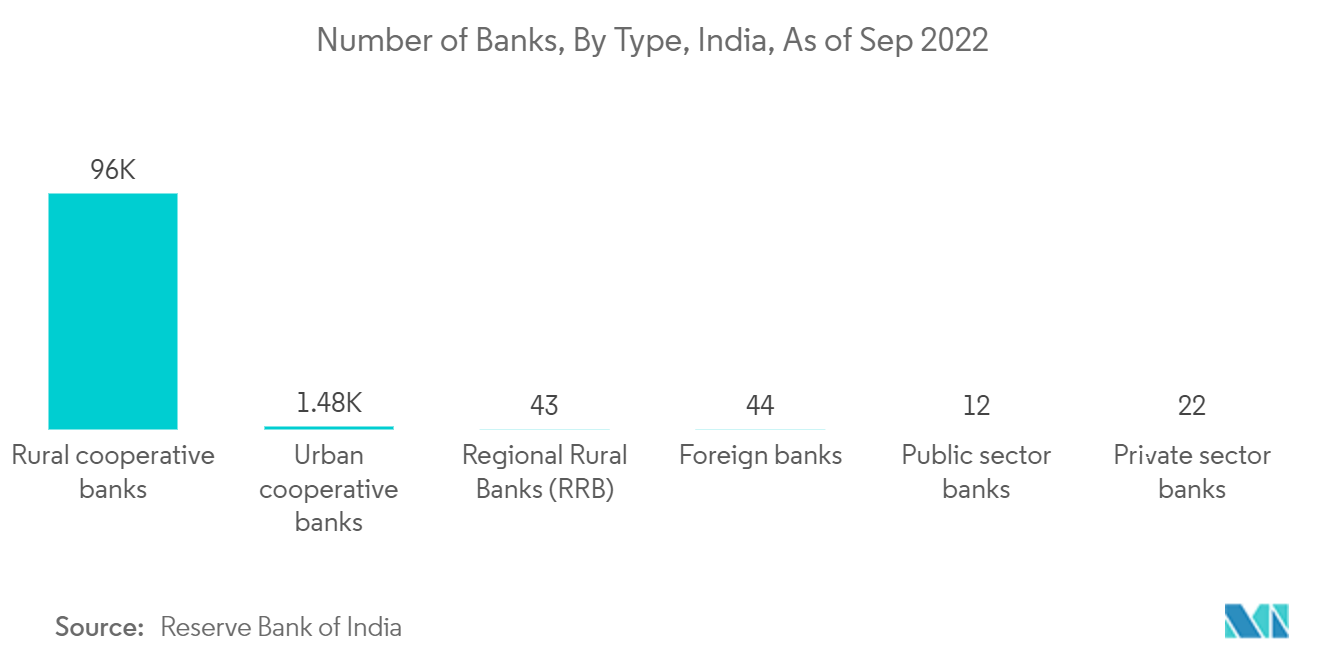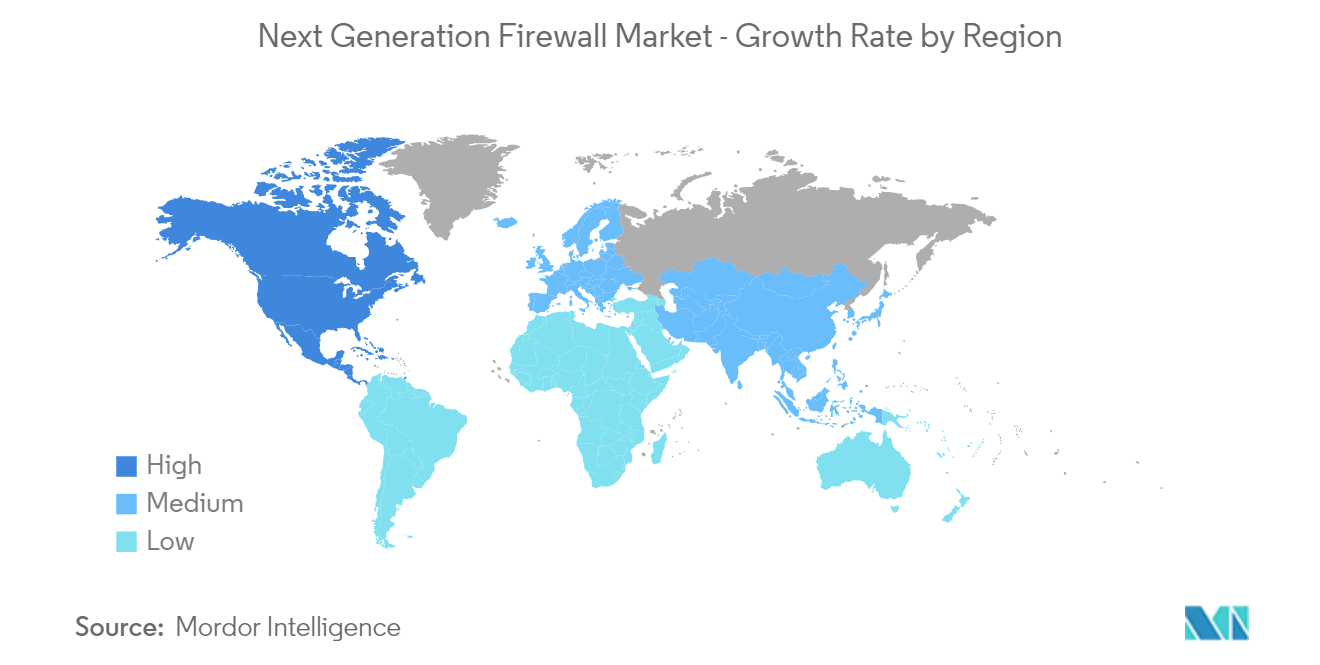Market Trends of Next Generation Firewall Industry
This section covers the major market trends shaping the Next Generation Firewall Market according to our research experts:
BFSI Sector is Expected to Capture Prominent Market Share
- The banking, financial services, and insurance (BFSI) industry are one of the critical infrastructure segments that face multiple data breaches and cyber-attacks, owing to the massive customer base that the sector serves and the financial information at stake. Being a highly lucrative operation model that has phenomenal returns along with the added upside of relatively low risk and detectability, cybercriminals are optimizing a plethora of diabolical cyberattacks to immobilize the financial sector. These attacks' threat landscape ranges from Trojans, ATMs, ransomware, mobile banking malware, data breaches, institutional invasion, data thefts, fiscal breaches, etc.
- With a strategy to secure their IT processes and systems, secure customer critical data, and comply with government regulations, public and private banking institutes are implementing the latest technology to prevent cyber attacks. Besides, with greater customer expectations, rising technological capabilities, and regulatory requirements, banking institutions are pushed to adopt a proactive security approach. With the growing technological penetration and digital channels, such as internet banking, mobile banking, etc., online banking has become customers' preferred choice for banking services. There is a significant need for banks to leverage advanced authentication and access control processes.
- In February this year, the Department of Justice (DoJ) and industry group Bankers Association of the Philippines (BAP) signed a memorandum of understanding (MoU) to raise cybersecurity awareness and combat cybercrime in the Philippines. The BAP aims to strengthen the banking industry's cyber-resilience and develop a collaborative partnership with the Justice Department to achieve a coordinated, collective, and strategic cyber response through information sharing and collaboration in the wake of rising cybercrime incidents in the country.
- Many banks are expected to drive the demand for the next-generation firewall market. For instance, According to, in India, there were 34 licensed private and public banks as of September this year. Data breaches lead to an exponential cost increase and loss of valuable customer information. Data breaches result in an exponential increase in expenditures as well as the loss of critical client information. According to the Identity Theft Resource Center, the number of data compromise victims in the banking and financial sector of the United States climbed to 160 million in Q3 last year, up from Q1 and Q2 combined. Cyber attackers are looking for the simplest way to build a financial gain assault against many financial services businesses.
- In January this year, the federal banking regulators of the United States issued a cybersecurity rule requiring prompt notification of a breach. The proposed rule is poised to provide the agencies with an early warning of numerous computer security incidents. It would need notification as soon as possible and by 36 hours after a banking enterprise determines that an incident has occurred. Such regulations could control cyber attacks in the banking sector of the United States.

North America Accounts for a Major Share of the Market
- The North American region currently dominates the global market, owing to the high preference of businesses for the security of the high volume of sensitive and important data used by them and the continuous adoption of high-performing network security solutions by organizations.
- In recent times, the major firms in the United States suffered from the fatal WannaCry ransomware attack when data was encrypted, and ransom was asked in cryptocurrency. The attack happened because the data of millions of customers was unsecured. Hence, stringent government regulations regarding consumer privacy were imposed. This factor is expected to drive the market's growth in this region.
- The Health Insurance Portability and Accountability Act, a federal statute of the United States, reported the increase of breaches by 25% year-over-year in 2020 in the Healthcare Data Breach Report published in January last year, with 29,298,012 healthcare records breached.
- Other sectors are also equally witnessing growth in the major cyber security issues in the country. For instance, according to the Data Protection Report 2021 from Shred It, the rate of companies (Large and SMBs) experiencing a data breach increased incredibly last year compared to 2020. The rate increased to 74% for large businesses the previous year compared to 43% in 2020, whereas the rate increased to 61% for SMBs from a low rate of just 12% on a year-on-year basis.
- Moreover, in light of the Russia - Ukraine conflict and a virtually endless cycle of threat campaigns and vulnerability disclosures towards the country, the US State Department, in April this year, launched a new agency, the Bureau of Cyberspace and Digital Policy (CDP), responsible for developing online defense and privacy-protection policies and direction as the Biden administration seeks to integrate cybersecurity into America's foreign relations.


